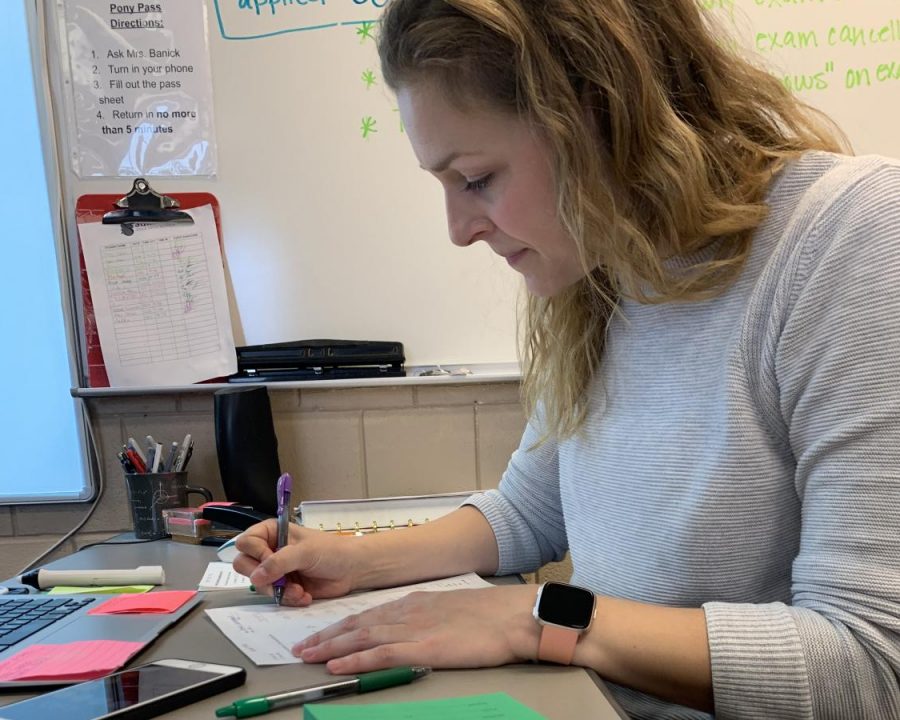New grading system creates better consistency
Math teacher Amanda Banick sits at her desk grading homework from previous class periods. She is using the new policy of the 20 percent formative and 80 percent summative to correct the students review sheets.
August 31, 2019
“Grades should reflect what students know and can do. Everything else has to somehow revolve around that,” Principal Robert Bach said. Over the past year and a half, a group of representatives was put together to look at modifying the old grading scale being used.
This scale was not consistent between different classes because teachers would set their own percents for summative and formative. The new grading system changes that, making it more consistent between classes and teachers.
“You just want to make sure that your grading practices are good. And by good, really what we mean is, is that it’s based on some kind of research that indicates that you know, there are some practices that help promote student learning better than others. We want to make sure our practices reflect that,” Bach said.
With so many technological advances, the world and how it works is constantly changing. Therefore, the second motive is that the way kids are learning at school is changing, and with that comes the need to develop the system.
“School hasn’t caught up with that yet, the new ways to grade that are maybe better than other people have thought about. The forefront is bringing that idea that we need to update our grading practices along with the world that’s changing and the new that makes sense,” said Nicholas Springer, a math teacher and grading team representative.
Through the discussion of committee members, they have put a plan into place that will help slowly start applying the new grading policy in all classrooms. Rolling out the plan is slowly going to help get everyone on the same page within the next two or three years when the policy is fully implemented.
“We’re going to roll out some of the easier things like everybody’s grade book looks like 20 percent formative 80 percent summative. The harder stuff to go through its plan for next year, we’re hoping that we can teach the teachers a little bit this year,” Springer said.
Getting a large group to agree on something is difficult. With the school having over 120 teachers in the building, there is going to be a lot of different mixed emotions.
“I know a lot of teachers are for it because they do think that students would benefit from having the same grading scale,” junior Brynn Wurgler said, “But also a couple teachers you know they have been doing it their whole teaching career a different way and so it’s hard for them to switch.”
Most things change for a reason, and this one is changing for the better. This policy is being developed to help benefit students going from one subject to the next.
“More standardization between all of your classes benefits students, you’re not looking at a bunch of different things in every single class,” Springer said.
With age comes responsibility, and with responsibility comes freedom. This new policy is projected to give students more flexibility within classes, such as when assignments would be turned in.
“It also should allow a little bit more freedom to learn into the material, it should reflect your knowledge not reflect teachers rules or stuff like that,” Springer said.
This new policy focuses on benefiting students and their high school experience. Some students have no clue about this new grading policy while others are very heavily informed. Wurgler is one that knows a lot about the new policy from meetings.
“They’re making it harder to get an A, which is good to learn for college for hard work. It will go over pretty well overall, but I’m not the biggest fan,” Wurgler said.











